 |
|
 |
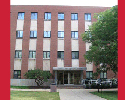 |
 |
|
 |
 |
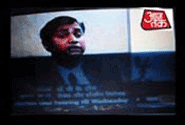 |
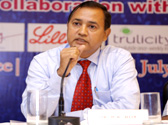 |
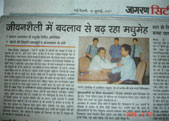 |
 |
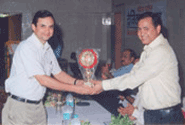 |
| Dr Roy's TV Interviews | Dr Roy giving Lectures | Print Media Presence | Testimonials | Awards & Achievements |
|
Male infertility
Male infertility i.e. difficulty in getting wife pregnancy due to defect
in semen as decreased sperm count & low (Poor) motility or abnormal
sperms occurs due to above causes. Treatment of low sperm count &
motility are discussed below.
|
|
|
|
What
is Low sperm motility: When less than 50% sperms are motile then this condition is called
oligoasthenia. When motility is less then chances of spontaneous
pregnancy decreases (i.e. difficulty in conceiving i.e. wife does
not becomes pregnant). This is one of the common causes of male
factor infertility. This is also one of the most common semen
abnormalities in men. Causes of low sperm motility: The various causes of decreased motility are as follows: Diagnosis of Cause of Low Sperm motility For correct diagnosis of cause of low sperm count, we need detail history & physical examinations then certain relevant investigations are required. History & Physical Examinations: First step in proper treatment is accurate diagnosis of cause of low sperm motility. So we first try to find out cause. We take detailed history, thorough drug counseling, and general physical examination, examination of testis, epididymis & testicular veins sperm carrying duct examinations. These examinations give idea about whether testis is normally developed or not & how is its function. After that depending on likelihood of particular, cause relevant tests are done. All testing facilities are available at our centre. Thus you may consult us at our centre & at same time you may get all tests done. The time taken in getting all the reports ready is 36 hours. So if you are from out of Delhi, you may come here for two days. Investigation & Diagnosis: For completes diagnosis of causes of decreased sperm motility & one or more of the following tests may be required as 1) Complete male hormone
profile: This profile includes all the male hormone tests which
control testicular development, functions including normal sperm
Productions. The tests include L.H., F.S.H., Testosterones,
prolactins, thyroids test, & other relevant hormone tests depending
on history & examinations. At our center facility for all the above tests are available. Treatment: Once the cause of low sperm motility are found then with in three months of treatment sperm motility & motility becomes normal in more than 90% cases. The various treatments are as follows: Correction of the Cause: First of all we try to find out the primary cause of infertility by above mentioned investigations. Then we correct the basic defect i.e. correction of hormone disorder & other defects as varicocele surgery, stopping of alcohol & smoking, stopping of offending drug. We also give following treatment for permanent cure of low sperm motility & motility disorder. 1) Correction of Hormone deficiencies: Once the hormone disorder is found then it is corrected by any of the below medicines. Usually sperm motility normalizes in three month time with proper hormone treatment. 2) Gonadotropin Therapy: Gonadotropins are most potent natural stimulators of sperm production in the testis. Once we start gonadotropin therapy, these gonadotropins stimulates the sperm producing cells in testis. Under the stimulating influence of gonadotropins sperm forming cells start dividing & produce multiple normally motile sperms.Thus in more than 90% cases sperm production can be normalized in three to four months time. Gonadotropin therapy is most successful of all the treatment available till now for sperm motility & motility enhancement. Gonadotropin therapy is indicated & effective all cases of hypogonadotropic Hypogonadism& almost all case of low sperm motility & motility. In many cases of low sperm motility when all other treatment has failed even in those cases gonadotropin therapy is effective. 3) Repronex. 4) Bravelle 5) Ovidrel 6) Gonadotropin-releasing hormone (Gn-RH) analogs 7) Growth hormone therapy in many cases where somatrop deficiency is found. 8) Growth Factor, Mineral & Micronutrient Therapy 9) Free Radial Scavangers: These are drug to reduce the free damaging oxidative radical in the testis. For your information every minute lot of oxidant radicals are generated inside the testis which damages sperm forming cells. These special antioxidant drugs scavange these damaging oxidative free radicals thus leading to production of normal sperms by the testis. In many study these free radical scavengers have been found to be very-very effective in normalizing sperm motility. 10) Coenzyme ubique: These drugs improve the nutritional status of the testis. Thus testis as well as sperm forming cells get enough nutrient which helps in fast generation of sperms in good number with good motility & fertilizing capacity. 11) Carnititine supplimentation increases the production of sperm, with normalization of sperm motility in three months. 12) Fertyl: This drug is taken orally and it causes the pituitary gland to release more FSH and LH, which then stimulates the testis to produce more sperms. 13) Bromocriptine. This medication is for men who have elevated levels of prolactin. 14) Correction of thyroid hormone 15) Correction of congenital adrenal hyperplasia 16) Vitamins 17) Zinc 18) MethyPredinisolone 19) Antibiotics 20) Antiestrogens 21) Tamoxifen 22) Clomiphene 23) Hgh 24) Antimicrobials 25) Anti-inflammatory 26) AIH 27) ART' 28) Certain Newer Drugs has been found very effective 29) Treatment of antisperm antibody is achieved by steroid therapy, intrauterine insemination intra-cytoplasmic sperm injection (ICSI) 30) Surgery: Depending on the cause, surgery may be a treatment option for low sperm motility due to partial blockade of the tract from testis to the tip of pennis. Surgery is also the treatment of choice for significant varicocele. Similarly surgery may be one of the treatment options for many endocrine tumours. 31) Intra-uterine insemination: In certain patients motile sperms are selected by various methods & then transferred directly in uterine cavity leading to improved pregnancy rate. 32) Test tube baby is also delivered with our efforts by use of intra-cytoplasmic sperm injection (ICSI), then transfer of embryo to uterus of mother. 33) Treatment of general genital problems. Addressing or premature ejaculation can improve fertility. Treatment for these problems often is with medication or behavioral approaches. 34) Semen Bank: Facility for good quality sperm is semen bank in also available. At our center we have facility for all the testing & treatment facility required for low sperm motility to achieve pregnancy. 35) Assisted reproductive
technology (ART)
The most common forms of ART include: a) In vitro fertilization (IVF). This is the very effective ART technique. IVF involves retrieving mature eggs from a woman, fertilizing them with a man's sperm in a dish in a laboratory and implanting the embryos in the uterus three to five days after fertilization. IVF often is recommended as a first-line therapy. It's also widely used for unexplained infertility, male factor infertility. b) Electroejaculation. Electric stimulus brings about ejaculation to obtain semen. c) Surgical sperm aspiration. This technique involves removing sperm from part of the male reproductive tract such as the epididymis, vas deferens or testicle. This allows retrieval of sperm if blockage is present. d) Intracytoplasmic sperm injection (ICSI). This technique consists of a microscopic technique (micromanipulation) in which a single sperm is injected directly into an egg to achieve fertilization in conjunction with the standard IVF procedure. ICSI has been especially helpful in couples who have previously failed to achieve conception with standard techniques. For men with low sperm concentrations, ICSI dramatically improves the likelihood of fertilization. 35) Varicocele ligation A varicocele is an abnormal tortuosity and dilation of veins of within the scrotum. It can be surgically treated - which might help fertility in some cases. Response of treatment: When we start treatment, maturation of spermatocyte to mature spermatozoa start occurring in three to 4 weeks time and achievement of normal sperm motility in three months. Thus cure rate is achieved in more than 95% of patients in three months time. Side effects: This treatment is harmless because we prescribe well proven drugs which are prescribed in scientific literature. These medicines have to be purchased from medical store by patient himself. For consultation & treatment (by appointment / or online) click How to Consult Us
|
|
|
|
We get
patients from all major cities in India & Abroad . In the following cities
all the facilities for investigation & treatments including medicines are
available as Delhi (North, South, East, Central, West, New Delhi). To
Different Communities like Hindustani, Hindustan, Hindu, Christian,
Muslim, Sikh, Parsee. The other cities are NCR, National Capital Reagion in India, Indian, Hindustan, Ghaziabad, Faridabad, Noida,
Gurgaon Gurugram, Meerut, Bombay, Chandigarh, Calcutta, Simla, Jammu, Srinagar,
Aligarh, Lucknow, Kanpur, Allahabad, Varanasi, Dehradun, Madras, Kolkatta,
Nainital, Agra, Jaipur, Bikaner, Jodhpur, Porbandar, Dwarka, Ahmedabad,
Gandhi Nagar, Vadodara, Surat, Mumbai, Pune, Thane, Panaji, Nasik, Nagpur,
Indore, Ujjain, Bhopal, Gwalior, Jabalpur, Raipur, Hyderabad, Goa, Visakhapatnam,
Bangalore, Banglore, Bangalooru, Mysore, Mangalore, Manipal, Chennai,
Pondicherry, Madurai, Kanchipuram, Coimbatore, Kanyakumari, Ernakulam,
Trivandrum, Darjeeling, Gangtok, Bhubaneswar, Puri, Guwahati, Shillong,
Imphal, Kohima, Agartala, Patna, Ranchi. |
|
|
Copyright © 2001 All Right Reserved www.DiabetesThyroidHormone.com